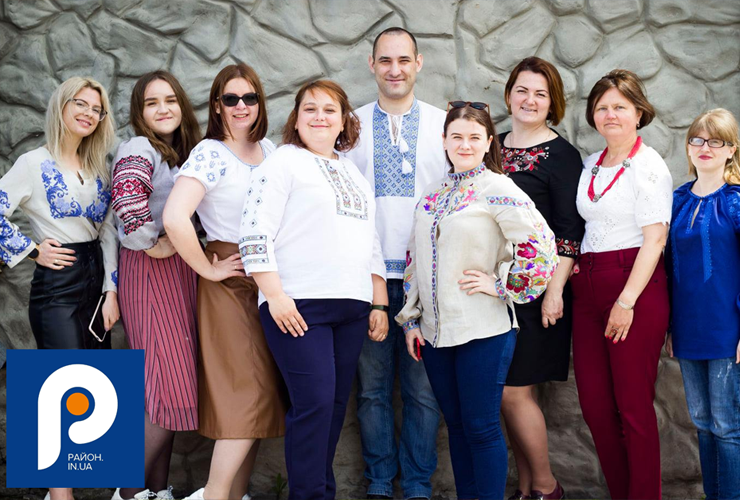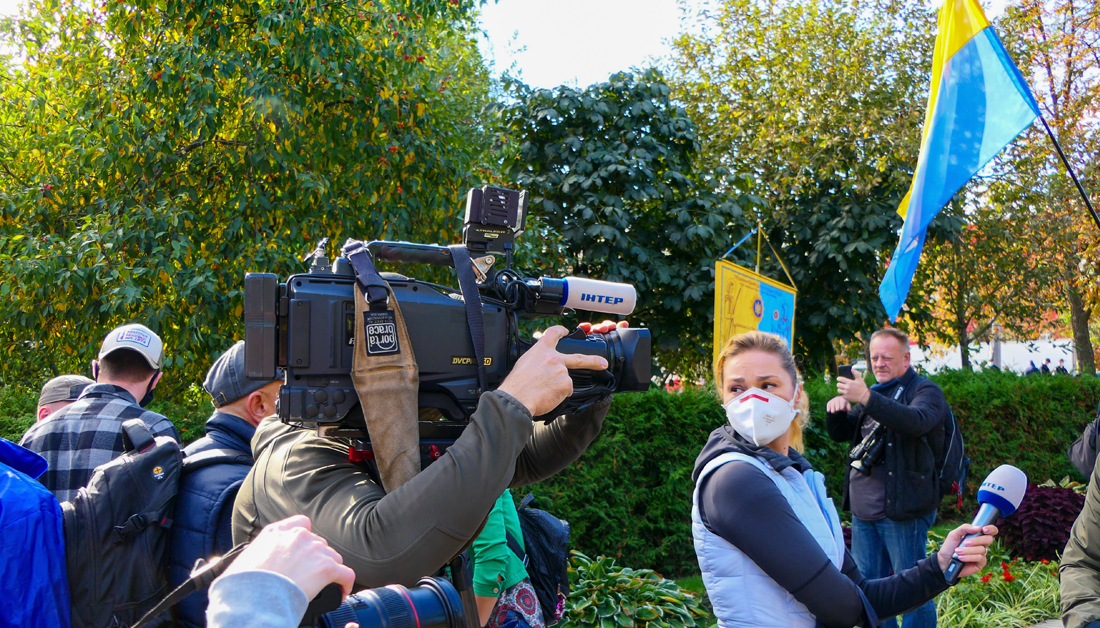Ukraine’s 2015 media reforms transformed the opportunities for journalism. Local news network Rayon and media agency ABO have been charting the way forward by building and engaging local communities, write Ameya Nagarajan and Sasha Schroeder.
“Destatization” – a clumsy word but an exciting opportunity. When Ukraine’s lawmakers passed a law removing the dead hand of state influence in the media sector, it triggered a move toward a more independent and modern media market. Successful media – some new, some transitioning – embraced the opening with a pivot to a new relationship with their audience, along with new digital products and new revenue streams.
Here’s a look at how they did it – and what happens next.
Rayon
Whether it’s news on weddings, school concerts, or potholes, media network Rayon in western Ukraine meets its audiences’ needs by building and involving local communities.
The network’s launch in 2015 coincided with a shift in how Ukrainian audiences consume local media. Many news organizations shifted their distribution from print to digital, driven by the spread of 3G mobile data networks and the privatization or closure of previously state- or community-owned local media.
Rayon’s parent company was restructured during this time and the company’s traditional print newspaper, print magazine, and radio became three new digital platforms: Family and Home, the tabloid Volyn, and a network of online local media called Rayon, which aimed to leverage the spread of mobile data with a network of online local media organizations across Volyn province in northwestern Ukraine.

Rayon team
The takeoff of mobile data allowed Rayon to reach much larger audiences, as internet access linked previously unconnected remote areas.
Building a platform for local media
Rayon wasn’t the only network born in this era of change. It was this same law on destatization that inspired Lera Lauda and Oleksandr Bilinskiy to launch a content management system (CRM) that local news organizations could use to go digital.
This formed the basis of the ABO Local Media Development Agency. ABO helps hyperlocal media with at least 10 stories set up a website in as little as two days. In the four years since it formed, ABO has helped launch over 50 websites around Ukraine.
The network seeks teams who are enthusiastic about digitizing their publications and offers mentorship and help with business models. This kind of support in Ukraine is desperately needed. As Lauda explains, “There were about 650 local media organizations in different regions, and one morning they no longer had funding, their digitization was at a low level and most of them didn’t have their own websites, or had really outdated websites. And they didn’t know what to do.”

ABO Team
The key aspects of ABO’s strategy are mentorship – focused on both editorial and sustainability – and network building that connects media and communities.
Seeking to transform media organizations that had previously been funded by the government, the network brought together senior editors who became mentors for five to seven local organizations over a period of six months to a year. These editors acted as temporary editors-in-chief for the local outlets, working with their teams to find the right business model and the right journalism mix.
People like to read about their neighbours
From the start, Rayon intended to be a hyperlocal network of regional newsrooms. These newsrooms seek to cover all aspects of their local Volyn communities. “We want people to associate Rayon with the word ‘news’”, Olena Reshotka-Rozhii, editor of Rayon, says.
The network’s hyperlocal audience colours the products it creates – people like to read about their neighbours, Reshotka-Rozhii says. Rayon helps its websites establish themselves in their communities, inviting locals into the editorial process and running a summer school to train citizens in journalism, which also serves to combat Ukraine’s lack of trained reporters.
As Reshotka-Rozhii explains, “Our readers are our friends. This is why we organize a summer school for people who want to learn to be journalists. And we’re also happy that colleagues from other media often learn from what we do, which is why we organize the largest forum for journalists in western Ukraine each year.”
Despite its hyperlocal focus, Rayon has reached audiences across Ukraine: its coverage of the silting of Ukraine’s deepest lake, Svityaz, attracted national attention.
Actively connecting with the community
Hyperlocal journalism is not without its challenges – in a place where everyone knows everyone, it can be difficult to write about problems such as local corruption and to get legacy editors and reporters to adapt to online journalism.
According to Lauda, most of the media outlets ABO works with did not have a strong grasp of advertising, marketing, and branding, and struggled to adapt to digital publishing. This makes it hard to push for and launch new products and change the way things are done. But when they did make it happen, the results were great.
To ABO’s surprise, they found that the most successful website was one serving a town of about 10,000 inhabitants. The site had a particularly driven editor who invested a great deal of time in connecting with the community, which led to the best fit between the content and the audience. ABO says that is the basis of success: people who are driven and active, and actively build and connect with the community.
“It’s not enough to serve as the media that covers news”, Lauda says. “The brand needs to be strong, something that matters to locals, not just a newspaper or a website.”
As part of connecting with the community, which is itself part of the branding strategy, ABO encourages media to invest in local projects. In one town the media outlet raised funds to build a playground for children in the town. Another managed to attract needed businesses – in this case a laundromat – to serve the needs of the town by tapping into the network of regional businesses. The media became drivers for these local communities to achieve their goals, which in turn made the communities invest in the media.

Карт-бланш / Carte Blanche, an ABO Youtube channel about media business in Ukraine.
Another key order of business was to introduce new media formats. Lauda said their idea was to see if “the usual formats used by big media could be adapted and transformed for small editorial offices”. One example was introducing infographics into long, previously text-only stories, which saw a big response from members of the community, who shared the graphics on social media. As it’s not always possible to find the skills needed for this type of creative work in small towns, ABO provides such services to local newsrooms.
Both ABO and Rayon rely on advertising, leveraging their regional networks to access a wider audience and raise more revenue. Rayon uses business.rayon to find businesses who want to advertise to other businesses, and is careful to refuse advertisers who they feel will not fit their audience. Both networks receive grant funding, and sometimes reader donations.
As for what’s next, Rayon is planning to continue reporting on COVID-19 and local medical institutions. Rayon also ran a successful round of crowdfunding, which it used to make a 10-part podcast about COVID-19. The network plans to crowdfund for a culture-focused website next.
The main takeaway from both these networks is that the future of journalism lies in building and connecting with your audience, turning it into a real community, and understanding and serving its needs.
This story is part of IPI’s Local Journalism Project. IPI’s work mapping, networking and supporting quality innovative media serving local communities is supported by the Friedrich Naumann Foundation and Craig Newmark Philanthropies.



